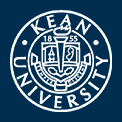Predicting soil organic carbon content in croplands using crop rotation and Fourier transform decomposed variables
Document Type
Article
Publication Date
4-15-2019
Abstract
Previous studies on soil organic carbon content or stock mapping mostly use natural environmental covariates and do not consider the soil management practice factor. However, human activities have become an important influencing factor for soil organic carbon, especially for agricultural soils. Crop species/crop rotations and management practices significantly affect the amount and spatial variation of soil organic carbon in croplands, but have not been considered for mapping soil organic carbon. In this study, we used direct crop rotation information and variables generated using Fourier transform on HJ-1A/1B NDVI time series data to capture the periodic effect of crop rotation, and explored the effectiveness of incorporating such information in predicting topsoil organic carbon content in cropland. A case study applied such method in a largely agricultural area in Anhui province, China. Crop rotation information was obtained through field investigation. Various combinations of predictive environmental variables were experimented for mapping soil organic carbon. The results were validated using field samples. Results showed that the combination of natural environment variables with both crop rotation type and variables derived through Fourier transform yielded the highest accuracy. In addition, only using the Fourier decomposed variables and crop rotation information were able to achieve a similar accuracy with using only soil formative natural environmental variables. This indicates that crop rotation information has comparable predictive power of soil organic carbon as natural environment variables. This study demonstrates the effectiveness of including agricultural practice information in digital soil mapping in agricultural landscapes with differences in crop rotation.
Publication Title
Geoderma
First Page Number
289
Last Page Number
302
DOI
10.1016/j.geoderma.2019.01.015
Recommended Citation
Yang, Lin; Song, Min; Zhu, A. Xing; Qin, Chengzhi; Zhou, Chenghu; Qi, Feng; Li, Xinming; Chen, Ziyue; and Gao, Binbo, "Predicting soil organic carbon content in croplands using crop rotation and Fourier transform decomposed variables" (2019). Kean Publications. 1354.
https://digitalcommons.kean.edu/keanpublications/1354

